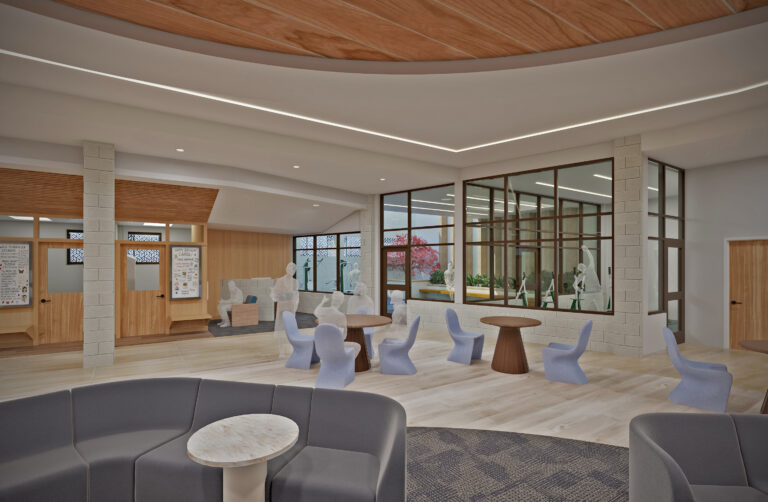Visilinc: IP and Analog Video Conferencing
 Trade Files
Trade Files
Company Name: Visilinc
Established: 2010
President: Greg Grant
Employees: 35 full-time
Phone: (877) 268-3700
Web: www.visilinc.com
Visilinc, which provides video visitation and video arraignment solutions between jails, courthouses, and other remote locations via high speed internet to facilitate inmate visitation and arraignment without moving the inmate from secure detention, wouldn’t be around today if another company hadn’t gone out of business.
Jim Miller, who works as Visilinc’s combination product manager-salesperson-engineer and is constantly brainstorming ideas to improve the product, previously worked for Cramer, which produced a similar video conferencing product called Prison Vision. When Cramer closed its doors a year ago, a firm called Gross Automation, which manufactured sub-assembles and enclosures for Prison Vision’s video visitation equipment, bought Cramer’s integration technology, hired a few of its key people – including Miller – and combined the two companies’ functions and expertise to create Visilinc.
Cramer’s Prison Vision system was analog, and it was developing an IP version when it went out of business. As a result, Visilinc offers both versions, which Miller says differentiates it from the competition. “Lots of facilities can’t maintain IP so they have an analog system,” he said. “We can provide equipment to both [types of facilities], we’re able to accommodate both parts of that world. A Lot of competitors can’t provide both.”
Visilinc’s video visitation function offers several options: sequential monitoring, which allows staff to rotate through current visitations two at a time and actively monitor or communicate with a selected visit; visitation scheduling, which allows staff to schedule visits, check for scheduling conflicts, and manage visitation lists; off-site visitation, in which the arraignment module allows an inmate to visit with an off-site professional while in secure detention; and recording and playback, in which visitations can be recorded and viewed by staff at a later time, which and allows staff to find a visitation based on multiple search criteria.
Miller says Visilinc’s capacity to allow probation, parole, and attorneys to take care of simple matters from their offices through video visitation is helping the product catch on. He also says that private attorneys, who generally start out viewing Visilinc with suspicion due to their fears of being monitored, “jump on board” once they reach a point where they believe they are, in fact, not being monitored. Inmates are also able to connect with other agencies that they may need to visit with, such as immigration and various federal agencies that house their inmates in a particular facility.
Visilinc has also begun offering offsite video visitation to the public. An inmate’s loved ones can connect into the system from their home computer instead of having to come to the facility for their video visitation session by logging into a website that loads a client onto the visitor’s computer for the duration of the visit, bypassing the need for the public to buy proprietary software.
“The only limitation is the visitor’s bandwidth and the quality of their computer,” said Miller.
The login is secure, says Miller, and doesn’t pose any sort of security threat to the facility or to the Visilinc system. “You’re only as good as your firewall,” Miller said. “Most facilities are pretty well structured so I don’t see a concern there. Since the person at home is logging into a server at the facility, they’re not providing access for anyone to jump in,” Miller said in reference to hackers.
Video visitation that takes place at the facility can cut operational costs, improve visitation efficiency, increase secure, and eliminate contraband, according to the company. The product connects the visitor and inmate housing areas, allowing visitation without removing the inmate from a secure area and separating the public from direct contact with the inmate.
Visilinc’s also allows for arraignment without moving the inmate from secure detention, saving money in reduced transportation costs and increased efficiency, according to the company.
Several additional uses come with the arraignment feature: professional consultation, which allows inmates to communicate with their counsel without leaving their cell block; expert testimony, which the company says reduces costs and danger to witnesses by offering remote testimony; and staff video conferencing, which allows for communication throughout a facility via the video conferencing feature.
Each video visitation or arraignment station’s equipment is housed in a VICE enclosure to ensure that the equipment is protected. The enclosures come in three lines: the V1 Enclosure line, which features a sloped top that prevents liquids from resting on top and which features hidden hinges for increased security and protection of internal components; the V2 Enclosure line, which shares all of the standard features of the V1 line, but features a flat top design and comes with several additional accessories; and the VX Enclosure line, which features completely custom enclosures.
Typically, all visits are recorded, and if an incident occurs during a visit, the staff person monitoring the visit can intervene. In cases where there have been previous problems with a particular inmate or visitor, staff usually monitors those visits more closely, said Miller. If certain information pertaining to a crime comes to light during a visit, “action is taken,” he added.
“I have several customers who have said they wouldn’t give [Visilinc] up,” said Miller. “They don’t want to give up that extra set of eyes and ears.”
Visilinc currently serves a several departments of corrections, ranging from small jails with only two on-site video visitation stations to behemoth facilities with 150 on-site stations. The company plans to add a feature that scans a visitor’s driver’s license in order to identify them, as well as biometric identification, although it is still determining whether it will add a palm reader, an iris scanner, or a thumb scanner.
It also plans to offer keyword monitoring in which the system will scan for certain red-flag words or phrases and alert staff.
“In this world it’s a never-ending improvement in features to make it smoother for the jail and less complicated,” said Miller.






